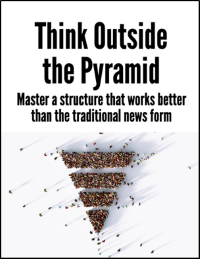Learn to Think Outside the Pyramid with Ann’s latest e-manual
Plus, never miss another one of Ann’s proven-in-the-lab writing best practices. Get a free subscription to Wylie’s Writing Tips, Ann’s weekly newsletter for corporate communicators.

Writing workshops, communication consulting and writing services
Plus, never miss another one of Ann’s proven-in-the-lab writing best practices. Get a free subscription to Wylie’s Writing Tips, Ann’s weekly newsletter for corporate communicators.

____
Learn to get the word out with our proven-in-the-lab techniques in our email newsletter.